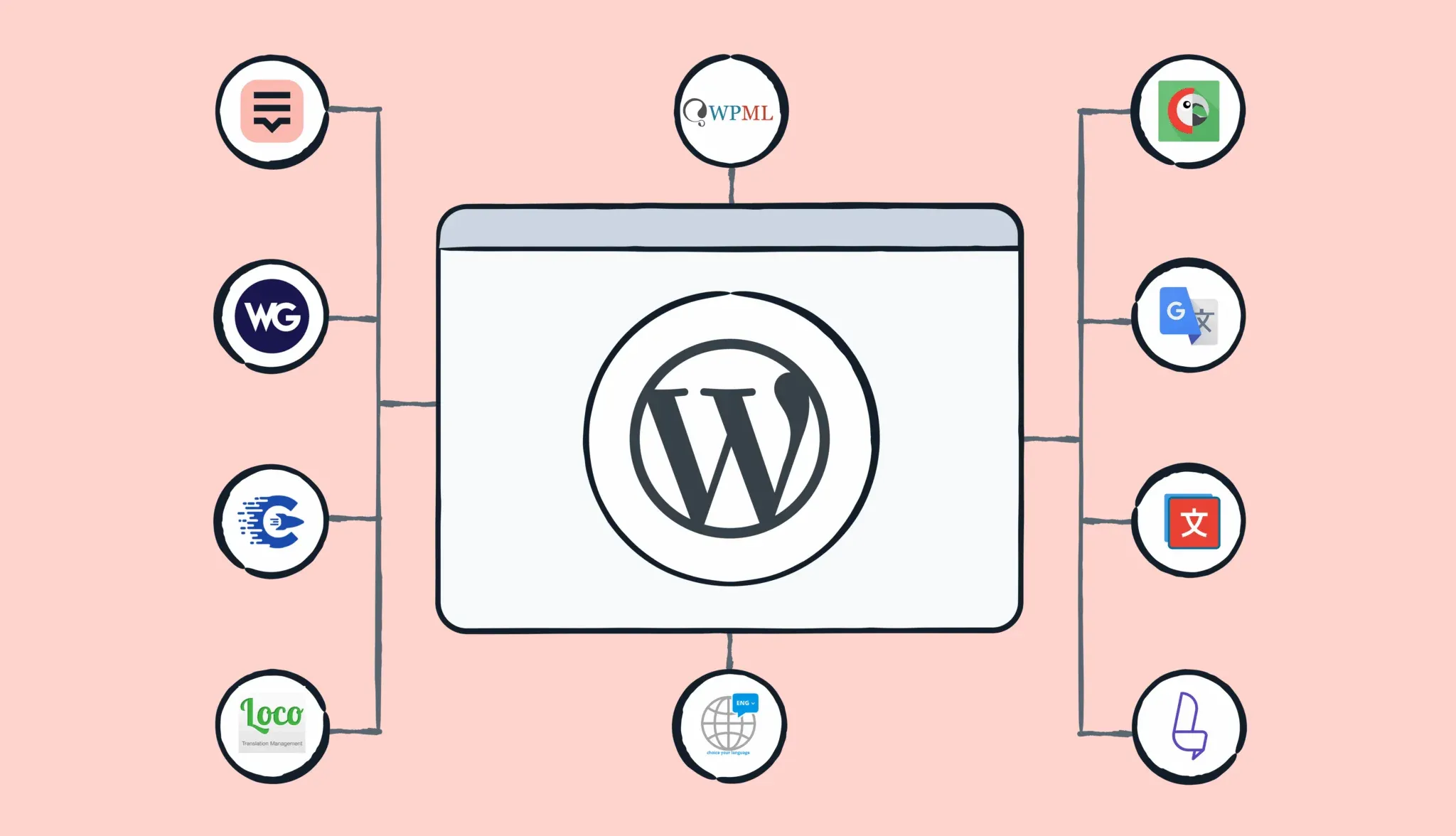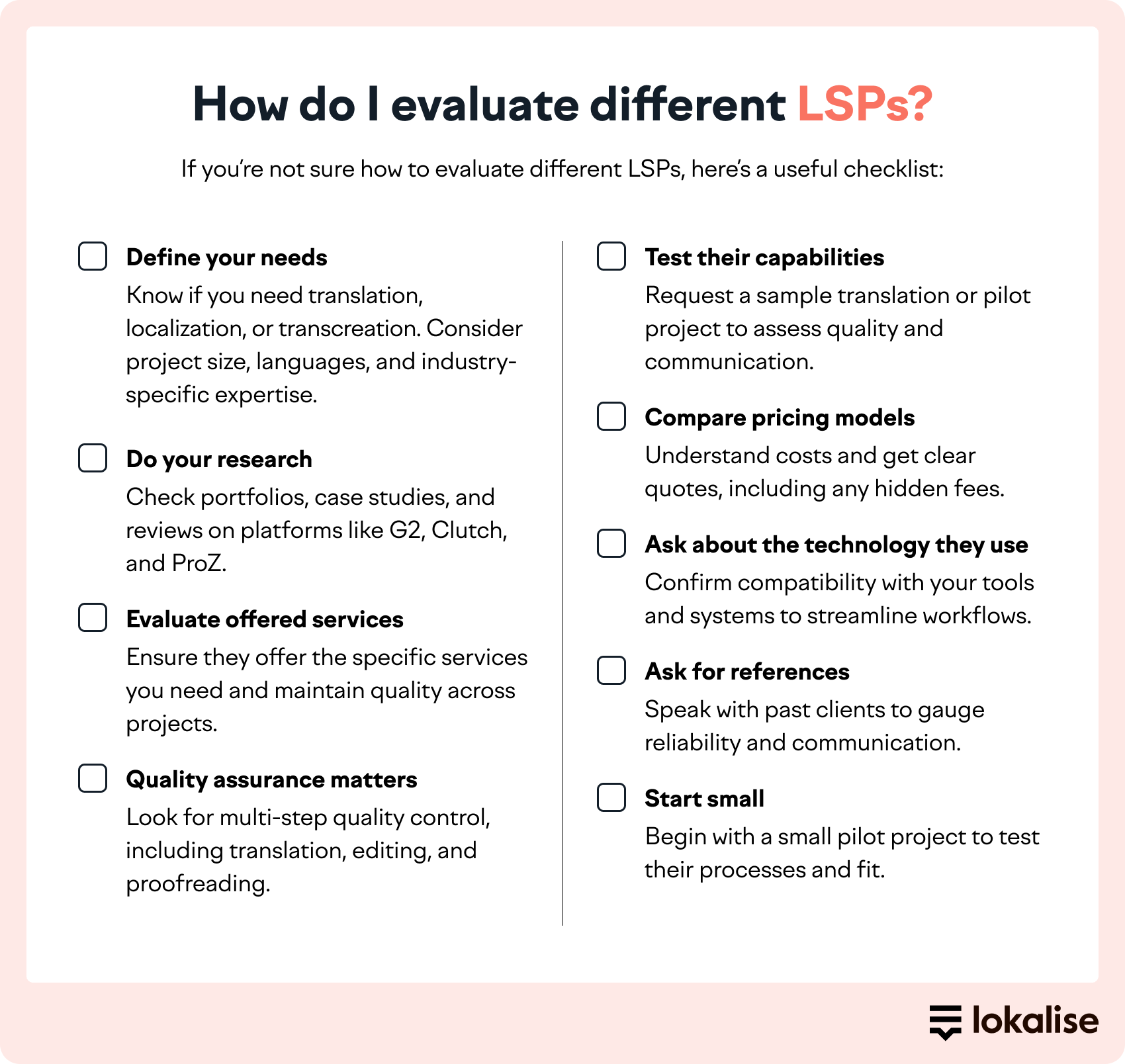A good Language Service Provider (LSP) should adapt to your existing tools and workflows, not the other way around.
Many LSPs offer integrations with popular platforms like content management systems (CMS), e-commerce sites, and project management tools. This means you can streamline translation projects without adding manual tasks to your team’s workload.
When evaluating an LSP, ask if they support the specific tools you use and whether integration is straightforward or requires custom development. The right LSP will make your translation process more efficient, not create more work for you.
7. What should I ask an LSP before signing a contract?
Before signing a contract with a Language Service Provider (LSP), ask a few critical questions to avoid any surprises later:
- What’s included in your pricing? Make sure you understand if project management, proofreading, or rush fees are extra.
- How do you ensure quality? Look for multi-step quality assurance, including translation, editing, and proofreading by different professionals.
- Can you handle my industry-specific content? Ask for examples of past work in your industry to gauge their expertise.
- What is your turnaround time, and what happens if deadlines are missed? Get clarity on timelines and their approach to managing delays.
- Do you integrate with my existing tools and workflows? Ensure they can work seamlessly with your content management or project management systems.
- How do you manage communication during projects? A clear point of contact and regular updates are essential.
- What happens if I’m not satisfied with the work? Understand their revision policy and how issues are handled.
- Can I start with a pilot project? Testing their services on a smaller scale can help you assess their quality and fit.
Asking these questions upfront can save you from unexpected costs, missed deadlines, and quality issues down the road.
8. What are the risks of not using an LSP when entering a new market?
You don't have to hire a Language Service Provider (LSP), but you do have to ensure that your translations are accurate, culturally relevant, and consistent across all channels.
Whether you choose to work with freelancers, build an in-house team, or use automatic translation tools, the key is to maintain a robust quality assurance process.
This means having skilled translators, editors, and proofreaders who understand your industry and brand voice, as well as leveraging technology to streamline workflows and manage terminology consistently.






